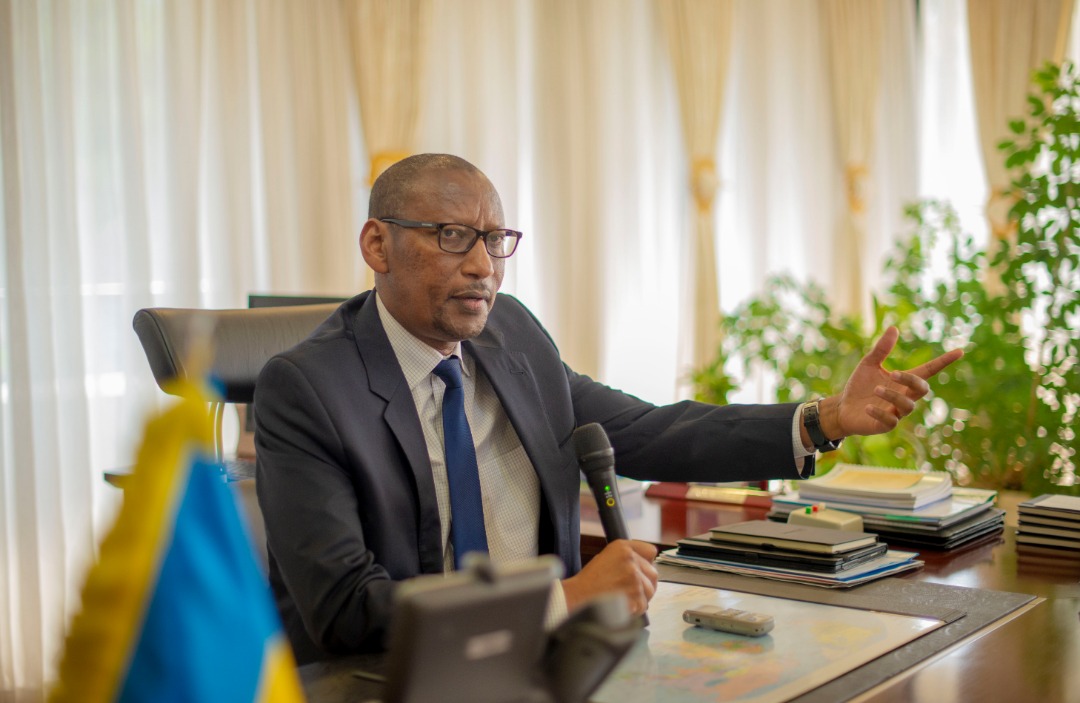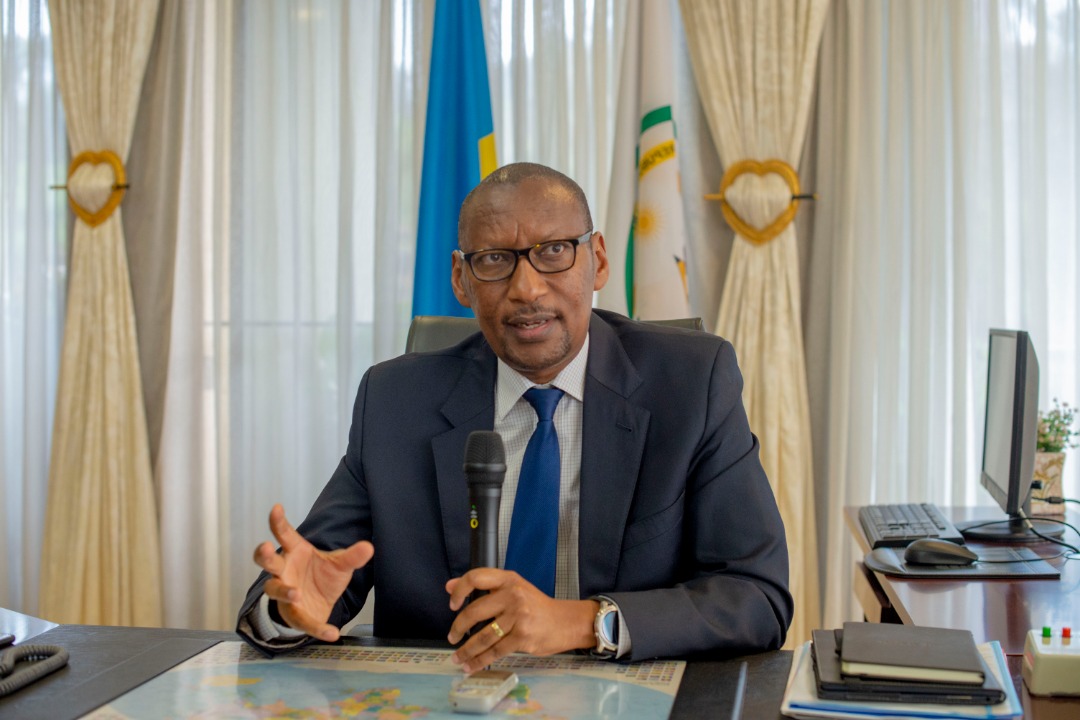
The National Bank of Rwanda (BNR) has released a half year Monetary Policy and Financial Stability Statement (MPFSS) 2020, which looks promising in the financial sector despite multi-sectoral shocks due to Covid-19.
The statement released this Monday indicates that Rwanda’s Economic growth averaged 7.4% (in the last 5 years) and Real GDP by 3.6% in Quarter 1, but key sectors and development drivers were affected by the Covid19 crisis except a few like the services and financial sectors.
For example agricultural production was at 0.5% from 4.0% in the first quarter of 2019, industry sector at 1.9% from 14.8, while construction subsector’s growth slid 5.3% 28.2% in 2020 Q1 compared to 2019 Q1.
“Construction sub-sector’s growth declined, after the completion of mega projects including Kigali Arena” the statement said.
The monetary statement showed the services sector grew by 5.6% in 2020 Q1 from 3.9% 2019 Q1 mainly supported wholesale & retail trade (11.4% from 4.6%), information & communication (33.7% from 2.2% and public administration (14.5% from -3.5%) in the same quarters of 2020 compared to 2019.
“The service sector was most affected by the Covid-19 pandemic through its negative effect on trade services, passenger transport services and tourism services, which also had negative spillover on financial services,” BNR said.
The tourism sector alone lost over $45million as a result of closure of tourism activities and air transport services with the hotels and hospitality segments getting the hardest knock down dropping by 25.3% compared to an 8% growth in 2019.
However government has recently announced an economic recovery fund of $100m of which $50million of it which will be injected specifically in this sector as part of the revival process.
The financial sector thrive amidst Covid19
Though the financial services had a drop of 15.5% compared to 14% in 2019, an assessment of the statement indicates that sector had highs, lows and generally performed better as a result of many factors including growth in cashless transactions.
For instance by June 2020, most liquid assets grew by 28.0 percent compared to a slow growth of 2.4 percent recorded in the corresponding period of 2019. This reflects improvement in banking liquidity, the report said.

The interbank market recorded an increase in number of transactions and amount exchanges with volumes transacted hitting Rwf1.3trillion in 2020 Half One (H1) from Rwf493billion in 2019 and number of transactions increased to 411 from 258 transactions in the same periods.
Growth was also evident in broad money M3 which picked up by 10% as a result of credit to the private sector mostly contributed 7.4% followed by net foreign assets 6.0% net credit to government 1.3% and public enterprises 0.6%.
Banking sector assets also continued to grow with the system wide total assets increased by 18.5% year on year as at end June 2020 to Rwf3,853 billion (42% of GDP), up against the 15.1% registered in June 2019 with strong growth of deposits by 17.8% up from 13.2% in the same periods of June 2020 compared to 2019.
“The financial sector remains dominated by the banking sector which accounts for 67.0% of the total financial sector assets as at end June 2020. The pension sector comes in second place with 17.2%,” the statement said.
The Micro finance institutions (MFIs) and Insurance sector also realized a significant growth despite Covid-19 shocks.
For instance Total assets of MFIs increased by 5.4% year on year from Rwf313 billion in June 2019 to Rwf330 billion in 2020 with deposits growing by 7% compared to the growth of 9% registered in June 2019 and Savings Schemes (Umurenge-SACCOs) increased by 3.6 percent (from Rwf47billion to Rwf49billion).
However New Authorized Loans( NALs) reduced by 9.2 percent from 38.6% growth in 2019 and major sectors that contributed to the contraction in NALs in 2020 include: manufacturing(-9.8%), water and energy (-7.5), transport warehousing and communication(-4%) and public works and buildings (-1.6%).
Trade deficit widens
While the gap between exports and imports (trade deficit) widened by 12.1 percent amounting to $969.6 million, from $864.7 million in the corresponding period of 2019, export receipts increased (9.1%) due to increased exports in non-monetary gold.
This gap was due to traditional exports (coffee, tea, minerals, pyrethrum as well as hides and skins), falling by 23.5% year-on-year, amounting to $97.2 million in 2020 H1 while imports of goods went up by 11.0 percent to $1,561.4 million as a result of rising demand for food products and increased imports of non-monetary gold for a refinery.


